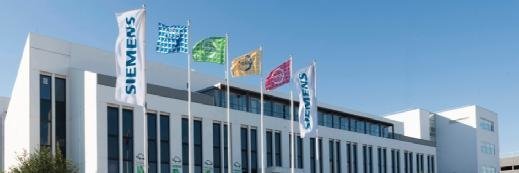
Siemens success sets the scene for growth in process mining
German industrial conglomerate Siemens has turned to process mining to reveal inefficiencies in the way it pays suppliers, organises logistics and runs order-to-cash processes
When global manufacturing giant Siemens created a central data lake, it had no idea it would generate such positive business benefits. Compliance was the main reason it started to collect data from its disparate ERP and finance systems and put them in one place, from 2008 using an Oracle database, and then from 2012 using SAP’s Hana technology.
But from 2014, it began to realise the data could do more than help the organisation mitigate risk and provide financial reporting. Using a technique called process mining, the company began to reveal inefficiencies in the way it pays its suppliers, organises logistics and runs its order-to-cash process, creating savings for the business in the 10s of millions of Euros.
Siemen’s success, primarily by using tools from software provider Celonis, could pave the way for a broader application of the technique and provide a foundation for robotic process automation, according to analysts.
Dr Lars Reinkemeyer, head of process mining for Siemens IT, says: “Building a global infrastructure for the data lake has been a major investment. It was a good investment at the time, mainly for compliance, but we are leveraging it for much more now and getting good payback.
“The additional cost of Celonis for process mining has been well invested, and now we better understand our complexity to help us design and manage business processes. But it all comes back to having the infrastructure in place and leveraging it.”
Siemens started using the Celonis analysis and visualisation tools to understand how quickly it pays its suppliers. Some suppliers offer early payment discounts, which Siemens was sometimes missing out on due to late payment.
To understand why, it needed to gather data from accounting, ERP and payment approval systems. Siemens has expanded the programme to tackle inefficacies in order-to-cash processes: the way it takes orders from, and is paid by, its customers.
Read more about process mining
- What is process mining software?
- Read how data mining and computer simulation can be used together to better model and improve industrial processes, city development and other complex systems.
- A guest blogpost by Bastian Nominacher, co-founder and co-CEO, Celonis: Process mining – levelling the playing field in the culture of immediacy.
The SAP Hana data lake has grown to more than 30 terabytes (TB), extracting data from more than 60 ERP systems and several other enterprise applications.
“From the user’s point of view, it appears seamless, but the information is coming from different sources across the business. We are able to visualise end-to-end through an entire process and the users identify where we have bottlenecks,” says Reinkemeyer.
The challenge is to track orders as they are received from the customer, and include every step until payment is received. Siemens deals with millions of customer orders every year and has identified around 70 different activities involved in the whole order-to-pay cash process. It uses the Celonis tool to visually map these processes through the organisation and, at a management level, identify which steps are ineffective or manual steps, taking too much time and effort.
“This is complemented by all the detailed information from every single order,” says Reinkemeyer. “The system gives you the tools to dig in to understand what is going on and where you are going wrong. It helps create measures that will help you to improve the KPIs. You used to have the case where management thinks you can do better, but nobody knows where to start. But with these tools its shows you where the problem is, and you can start straight away.”
Given the demonstrable success of process mining, Reinkemeyer’s team is now getting more demand for the business to analyse other processes, such as manufacturing plant processes. But it was a risk basing the project on technology from Celonis, a relatively small software firm founded in 2011.
“With a company like SAP, it is easy to say it is a competent partner. When we signed with Celonis, they were small and it was a risk. But we felt that the management team and the founders were very strong. They put a lot of effort to responding to requirements and they have grown with the project,” he says.
Smart algorithms
Siemens is now moving from analysing and mapping business processes to modelling them using a Celonis tool called Pi Conformance and Machine Learning. The aim is to predict which customer orders will be likely to arrive late based on smart algorithms which continuously learn from Siemens’ performance.
Although business units are initially very impressed when they see the capabilities of process mining, IT teams still need to identify a “process hero” in the departments to ensure projects maintain momentum,” says Reinkemeyer.
“There is often the desire for action, but it is more difficult to get going in the business department,” he says. “A process hero is willing to take the new technology and drive its adoption in their area of responsibility. Some people are not interested enough to change, or they don’t want the spotlight shone on the dust in the corner. You need to find the right people to rock the organisation, make changes and drive processes with the tools.”
Celonis describes itself as the leader in the nascent field of process mining. The company was born in 2011 from a research project at the Technical University Munich. In an effort to simulate processes at a local broadcasting company, the Celonis’ founders realised they needed much more information about how processes worked in real life, rather than how employees described them, says Remy Lazarovici, senior vice-president for business development at Celonis. It started to follow a digital trail of application data and understand how a process is carried out.
Cenolis’ next move was to build visualisation technology on top of its analytics tools to help lay users, rather than data experts, understand business processes. Its big break came in 2015 when it struck a reseller agreement with enterprise application giant SAP. Celonis provides online training as well its software and out-of-the-box data connectors for popular business applications including SAP, Oracle, Microsoft Dynamics and Salesforce.
“In a very short time, you can get insight into business operations that before you either needed a lot of time to achieve, or never able to establish. You can confirm gut feeling and find areas where you can improve. Our customers are often surprised that all this insight comes from the data that they already have stored but never got the value from,” says Lazarovici.
“When people first see processes visualised, it is eye-opening. They see lots of things they would not have expected and say, ‘that cannot be true… there must be a mistake in data!’ But in reality, the data never lies. Once they start trusting the data and they can look for the business improvement, that can help convince wider business users. Sometimes, some people know there is a problem, but nobody believes, so it can be difficult to convince people to change processes,” he says.
Gap between belief and practice
Businesses have always tried to understand their processes, which can often change without management oversight, says Marc Kerremans, a research director at Gartner. “The problem is, if you interview three different people about a task they perform, then they can come up with three different answers. It has a lot to do with bias and interpretation.”
On average, there is a 46% gap between how businesses believe processes are carried out, and how they are done in practice, he says.
Celonis seems to be the leader in process mining technology, with about 70% market share, but there is a raft of competitors coming into the market, says Kerremans. Others include Finnish firm QPR, Italy’s Cognitive Technology and Fluxicon in The Netherlands. Meanwhile, Deloitte has business unit addressing process mining, and Phillips and Samsung have also worked with similar techniques, he says.
The challenging part of a process mining project can be getting the data and cleansing it, he says. Technology teams can use application log files, but in Siemens’ case, 80% of the information came from SAP’s system, to which Celonis provided a direct connection. If projects need data from a more diverse set of applications, including legacy banking applications, getting and using the data can be more difficult, he says.
After managing the data, it is also important to build a user community around process mining so that the project can engage with the wider business,says Kerremans. “Building that sense of collaboration with the business: that is why Siemens has been so successful.”
Driving out inefficiency
Process mining has been successful in driving out inefficiency in processes and providing baseline data and ongoing metrics for business process re-engineering, says Kerremans. But it also becomes essential to underpin the rapidly developing field of robotic process automation, as it will improve the accuracy of businesses’ understanding of tasks before they automate them.
“This is where process mining will come into its own. It will become the sister of RPA [Robotic Process Automation]. If you can combine the two techniques, you can improve your rate of success,” says Kerremans.
As the market for RPA tools alone will be worth $2.9bn by 2021, according to Forrester, process mining is likely to attract increasing interest. But companies will only succeed if they have the process data in a fit state to mine. And for that, if lessons from Siemens are anything to go by, they need the right infrastructure.










